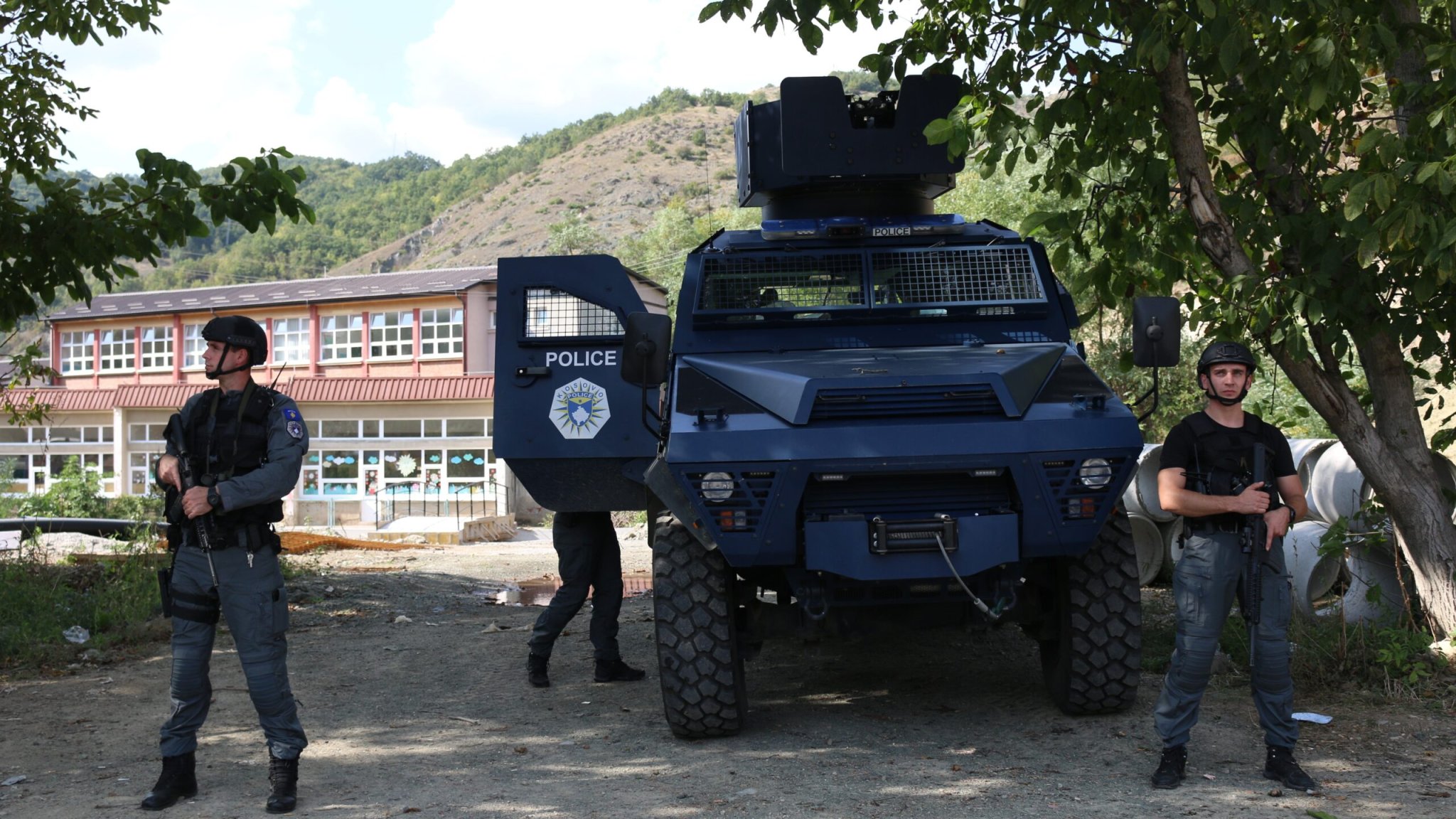

NATO authorized more troops to Kosovo as Serbian forces mass near the border. The military buildup comes after a gunfight last weekend that killed four people.
In response to the violence, NATO’s mission to Kosovo (KFOR), which has thousands of troops including hundreds of Americans, is increasing patrols in the northern part of the country, where the violence took place. In a statement to Task & Purpose today a NATO official said that it had authorized additional forces to addresses the situation “if needed.”
“In light of recent developments, KFOR is increasing its presence and activity in northern Kosovo and the areas around the Administrative Boundary Line to ensure it continues to deliver on its mandate of providing a safe and secure environment for all people living in Kosovo,” the NATO official continued.
The move by NATO comes as the United States says Serbian troops have been massing near the border with Kosovo throughout the week. The Biden administration is calling on Serbia to withdraw the added forces from the border, which include “an unprecedented staging of advanced Serbian artillery, tanks, mechanized infantry units,” White House National Security Council spokesman John Kirby told reporters this week.
Subscribe to Task & Purpose Today. Get the latest military news and culture in your inbox daily.
Tensions have been building along the border for the last past week. On Sunday, Sept. 24, approximately 30 gunmen ambushed a police patrol before barricading themselves inside a church. The shootout killed a Kosovar police officer and three Serbian gunmen. A large cache of weapons were found inside the church.
On Saturday, Kosovo’s Prime Minister Albin Kurti accused Serbia of wanting a war, saying that the attack was meant to increase tensions. Serbian President Aleksandar Vukuc has only directly addressed claims that Serbian troops are on high alert, saying that is “not accurate.”
“We call on all parties to urgently de-escalate. We continue to urge Belgrade and Pristina to engage in the EU-facilitated dialogue, as the only way to resolve outstanding issues and reach solutions that respect the rights of all communities,” NATO said in a statement on the tensions on Friday, Sept. 29. “This is key for lasting security in Kosovo and stability in the region.”
On Friday NATO’s governing council approved additional troops for the NATO mission in Kosovo. The United Kingdom’s Ministry of Defence announced that it transferred a battalion to NATO command and that the soldiers are already in the area.
The NATO mission in Kosovo began in 1999, with the NATO intervention in the war in 1999. The bombing campaign forced Yugoslav forces to withdraw from Kosovo that year. NATO troops have remained in the area since as a peacekeeping force. Kosovo, a majority Albanian state except for a Serb-majority northern region, declared independence from Serbia in 2008. Serbia does not recognize its independence.
NATO currently has more than 4,500 troops in Kosovo. More than 600 of those are American military personnel.
Task & Purpose also contacted the White House National Security Council and the U.S. military’s European Command to see if any additional American troops would be sent to Kosovo in response to the Serbian build up, but as of press time has not heard back from either party.
The latest on Task & Purpose
- 101st and 82nd Airborne Division soldiers deploying to Eastern Europe
- Have you seen me? All the best ‘Missing F-35’ memes
- Marine Corps searching for F-35 after pilot ejects in South Carolina
- Senate bypasses Tuberville on Joint Chief nominations for Brown, George
- Search for missing Marine F-35B finds debris field
